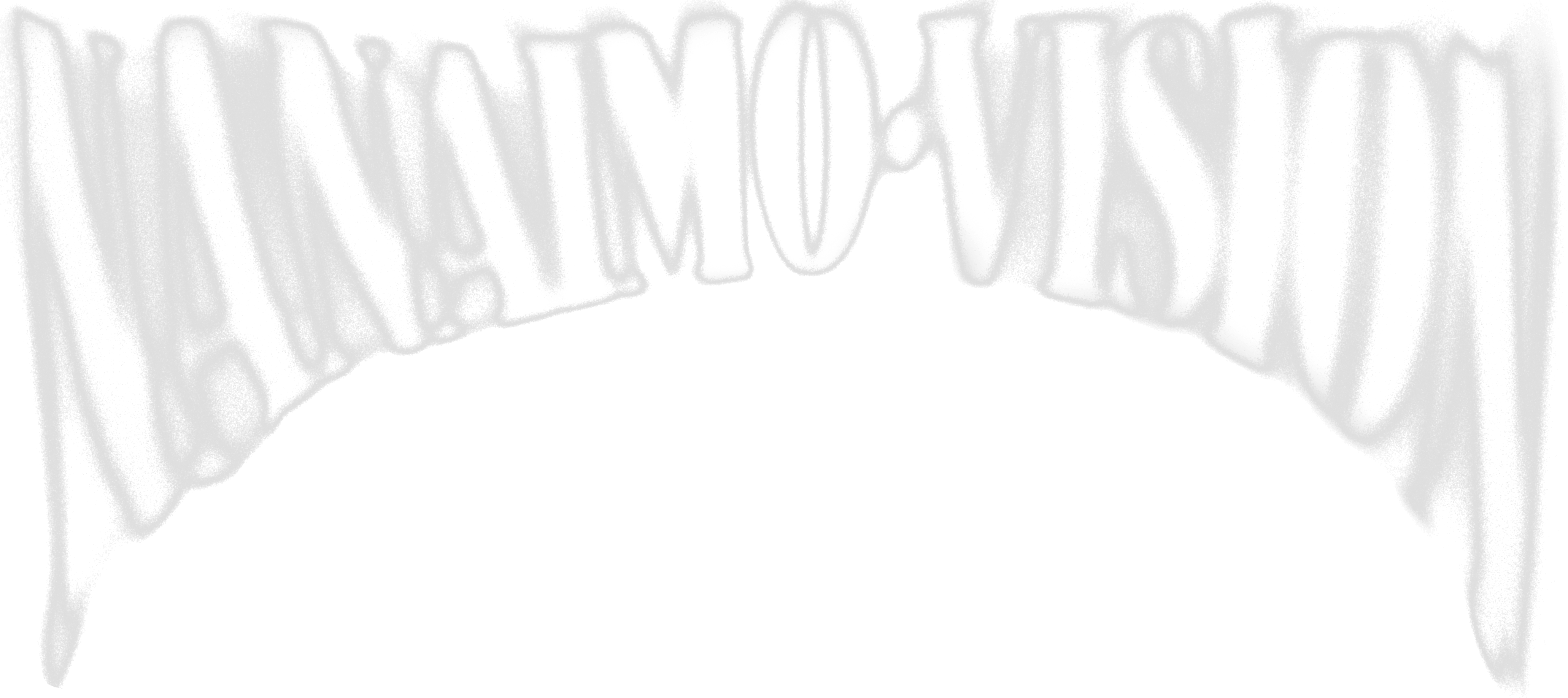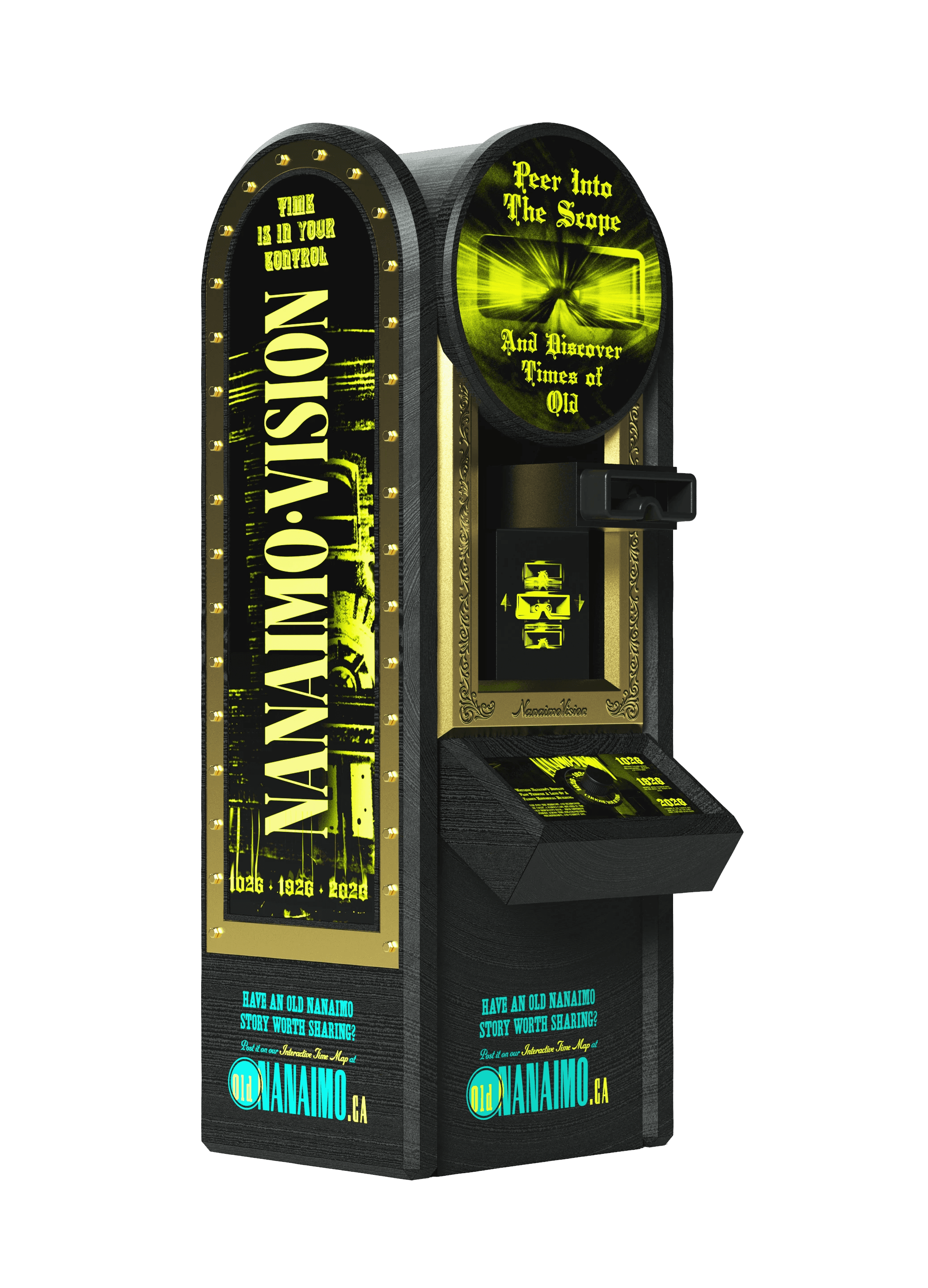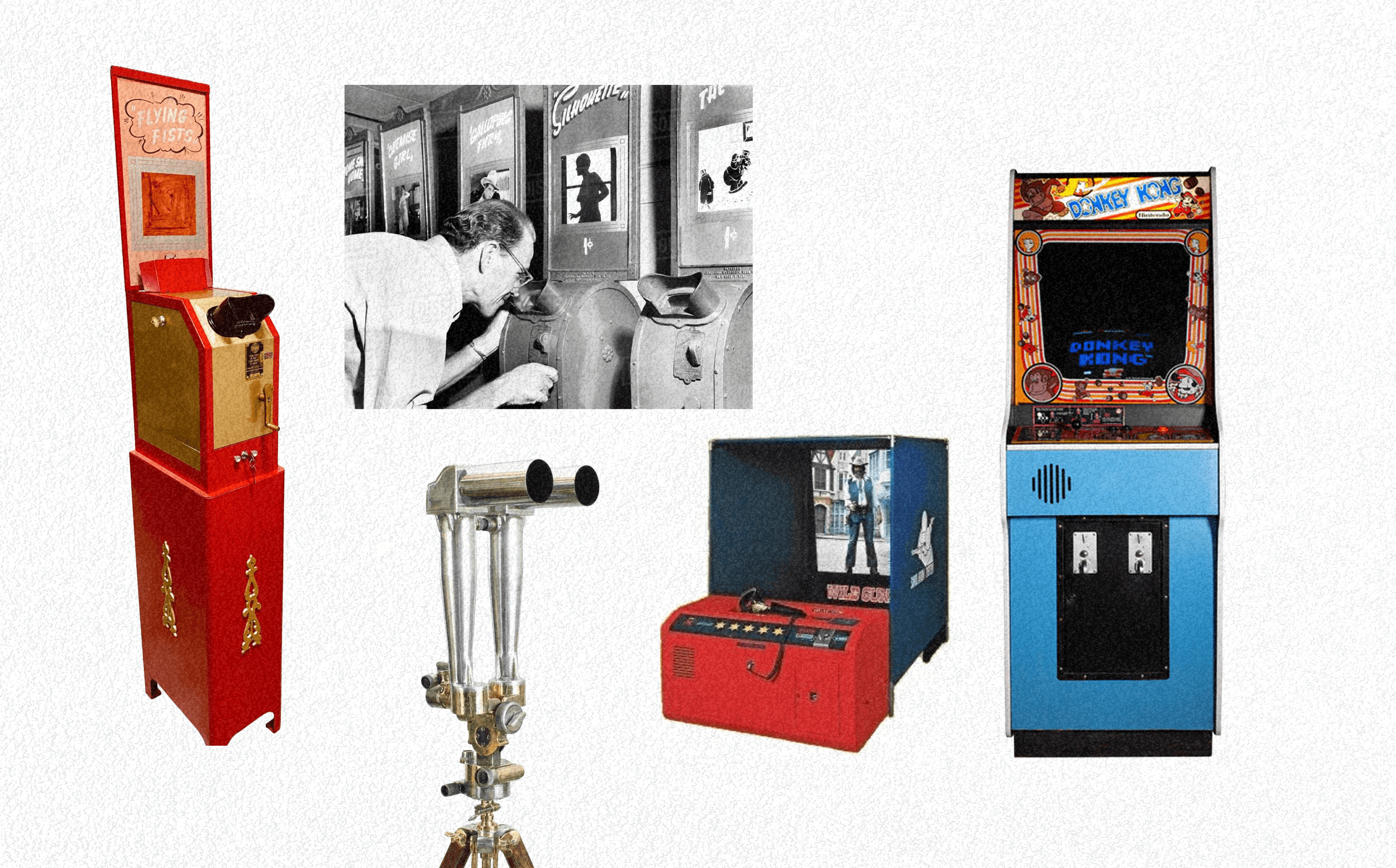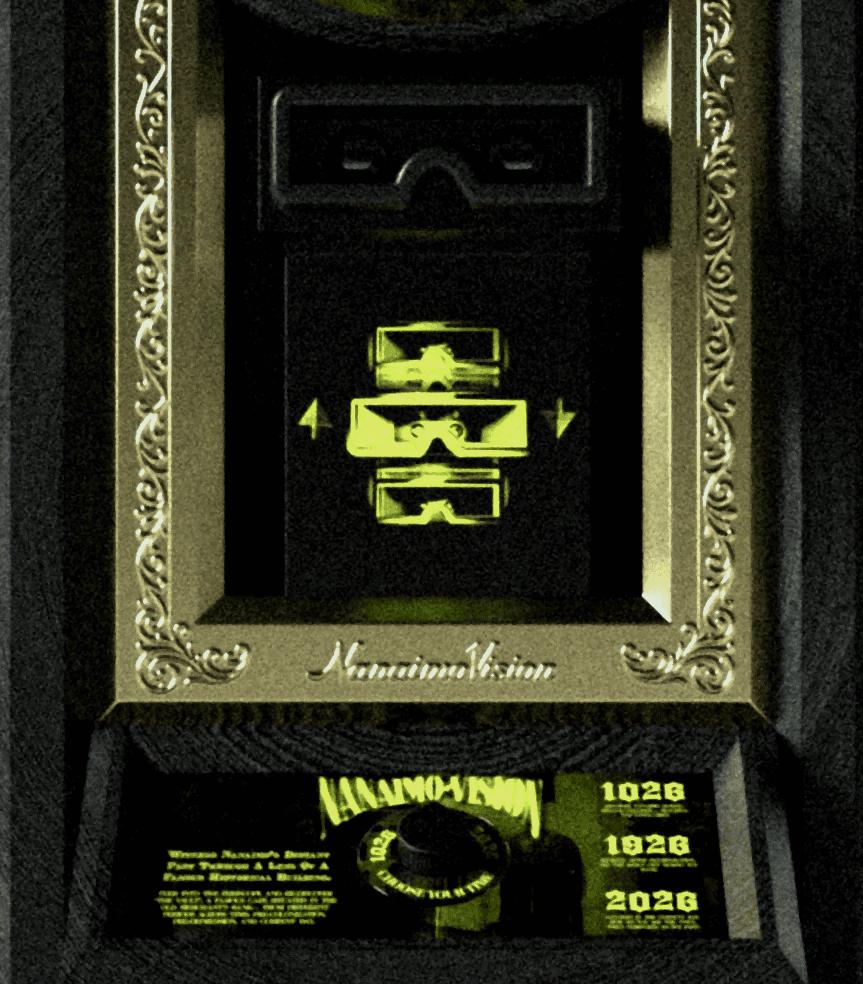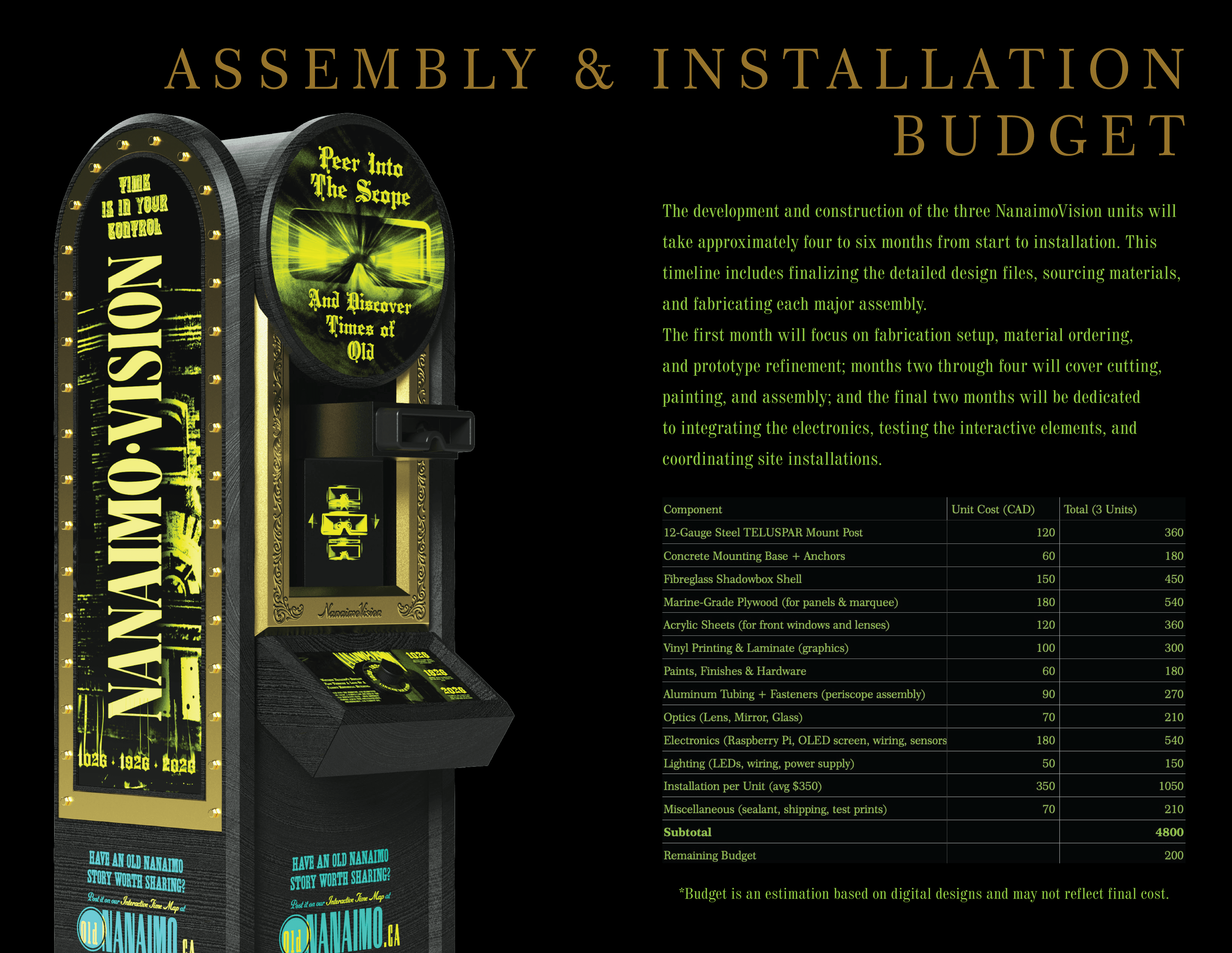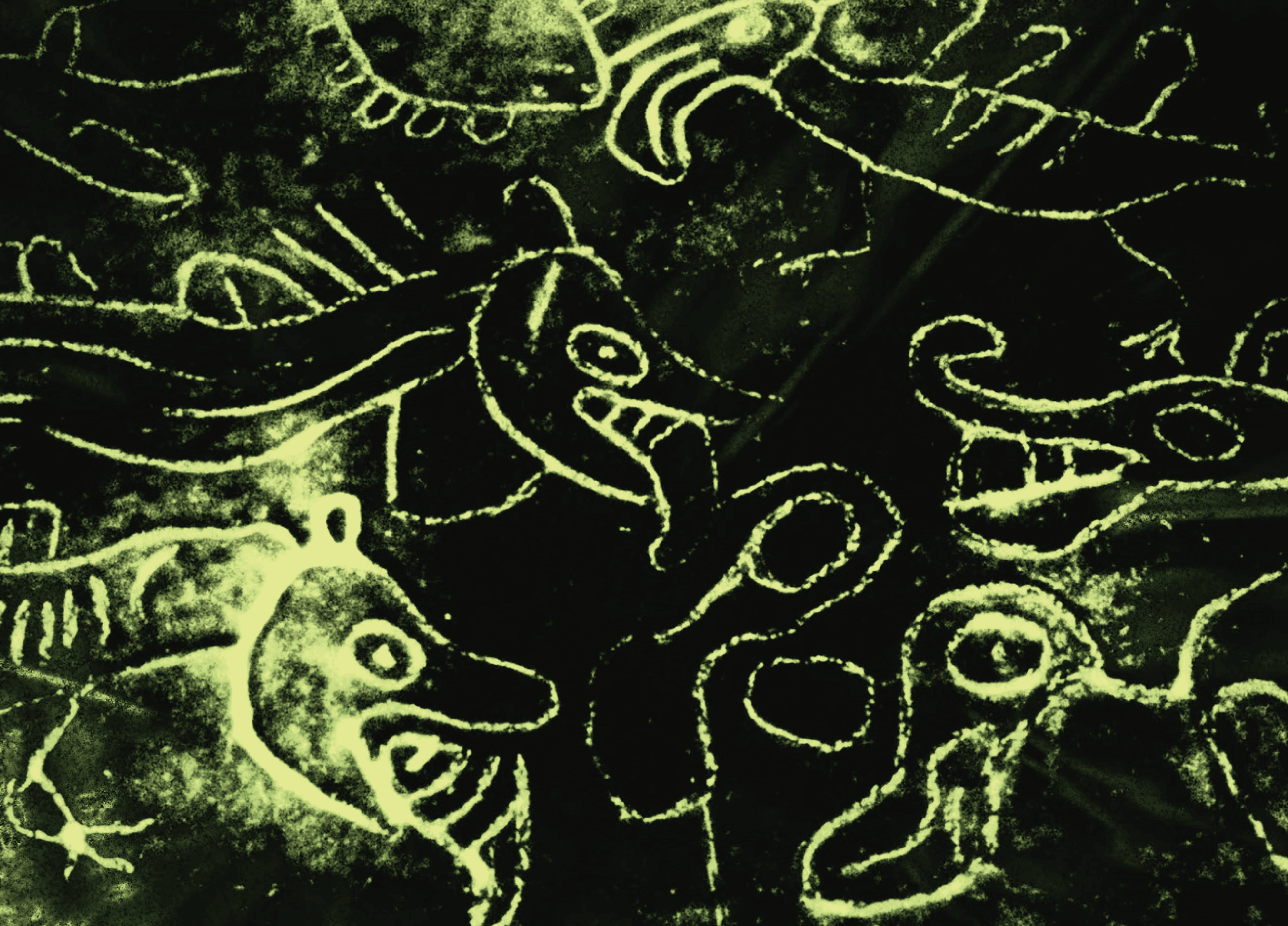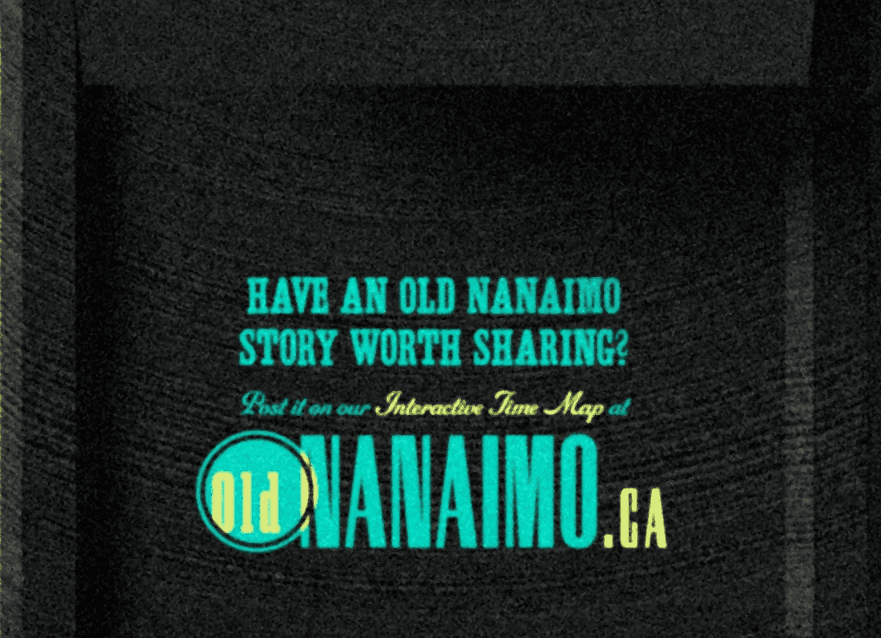Problem
How do you make local history feel immediate and magical? Museums and heritage sites often struggle with a fundamental disconnect: the past is presented as over there—behind glass, in photographs, through plaques. Visitors read about history but rarely experience it in the places where it actually happened. This creates emotional distance, especially for younger audiences who've grown up with interactive digital experiences.
Nanaimo has a rich, complex history—from pre-colonial Snuneymuxw territories through colonial development to the present day. But standing on a modern street corner, it's nearly impossible to imagine what existed before the buildings, the pavement, the infrastructure. How do you bridge that gap between past and present without requiring a museum visit or a history degree?
As I developed NanaimoVision, I kept returning to a central question: What if you could stand exactly where history happened and see it unfold around you—not through a phone screen, but through something that felt tactile, mysterious, and rooted in the place itself?
The solution was to create a public sculptural experience that transforms familiar street corners into portals through time. NanaimoVision is a brass-and-oak periscope cabinet installed at historically significant locations throughout Nanaimo. By turning a dial, viewers see three moments in time—Far Past (pre-colonization), Past (early 1900s), and Present—seamlessly blended with the real-world view through layered, animated overlays.
The magic comes from making history feel present and tangible. Unlike phone-based AR (which requires downloading apps, dealing with poor lighting, and framing shots) or traditional museum exhibits (which remove artifacts from context), NanaimoVision places the experience exactly where history occurred. You're not looking at a photograph of Wallace and Albert circa 1926—you're standing at Wallace and Albert, seeing 1926 materialize around you through a brass periscope.
The technical innovation uses a "pepper's ghost" optical illusion: a small OLED display positioned between mirrors creates spectral overlays that blend with the real-world view through the periscope lens. By masking portions of the digital foreground, the system reveals different landscapes while retaining authentic sky and foliage, creating dimensional depth impossible with flat screens.
Design principles that shaped development:
Place-based storytelling: Each cabinet is custom-designed for its specific location, with artwork and historical scenes reflecting the unique story of that corner
Tactile interaction: A physical dial controls time travel—no touchscreens, no apps, just mechanical input that feels satisfying and immediate
Decolonization as core theme: Every cabinet's "Far Past" scene imagines the location before colonial influence, centering Snuneymuxw presence and land relationships
Timeless aesthetic: Inspired by nickelodeon machines and arcade cabinets, the design feels "out of time"—simultaneously vintage and contemporary
Accessibility was designed in from the start: the periscope assembly mounts on a sliding rail, allowing viewers to adjust height without assistance. The dial mechanism requires minimal fine motor control, and the optical system works in varied lighting conditions without batteries or charging.
Visual Identity: Out-of-Time Design
NanaimoVision's aesthetic is deliberately anachronistic—a fusion of Victorian-era curiosity cabinets, Art Deco ornamentation, and contemporary minimalism. The design communicates mystery and craftsmanship at first glance, inviting interaction through visual intrigue rather than explanatory signage.
Material Language:
Brass paneling: Evokes scientific instruments and nautical equipment (fitting for a port city), weathers beautifully, and develops patina that tells its own story
Satin black oak frame: Grounds the brass details in modern design trends, provides durability for outdoor installation
Vintage-inspired marquee art: Custom illustrations for each location (changed seasonally) drawn in the style of 1920s travel posters and amusement park signage
Ornate detailing: Inspired by "amusement boxes" and carnival attractions—decorative without being kitschy
Why this approach works: The cabinet doesn't look like modern tech (which would date quickly) or purely historical recreation (which might feel inaccessible). Instead, it occupies a liminal aesthetic space that feels like it could have always existed. A viewer in 2025 finds it intriguing; someone encountering it in 2045 will still find it compelling.
Modular Design Philosophy: The marquee and artwork panels are easily removed and replaced, allowing seasonal updates, special event tie-ins, or location-specific storytelling without rebuilding the entire cabinet. This modularity extends the cabinet's cultural lifespan—it's not a static monument but an evolving storytelling platform.
Design Inspiration & Precedents
The visual language draws from several sources:
Nickelodeon machines and arcade cabinets: The golden age of coin-operated entertainment understood spectacle and reward. These machines invited interaction through ornate presentation, promising something magical if you engaged. NanaimoVision borrows this language of invitation.
Victorian scientific instruments: Brass microscopes, telescopes, and optical devices from the 1800s combine precision engineering with decorative craft. They communicate seriousness and wonder simultaneously—exactly the tone needed for public history installations.
Pepper's ghost illusions: The theatrical technique dates to 1862 and has been used in haunted attractions, magic shows, and theme parks. By applying it to historical storytelling, NanaimoVision connects to a long lineage of optical entertainment while serving educational goals.
The result is a cabinet that feels like a benevolent conspiracy—something mysterious and valuable placed in public space, waiting to share secrets with those curious enough to look.
Optical System & Technical Build
The periscope assembly is the heart of NanaimoVision's magic. Unlike phone-based AR (which frames the world through a small screen) or projected video (which washes out in daylight), the optical system creates seamless integration between past and present.
How It Works:
Real-world view: The viewer looks into an adjustable eyepiece that directs their gaze through a series of mirrors down to a lens at the top of the cabinet
Pepper's ghost layer: Between the mirrors sits a small OLED display paired with a clear angled screen. This creates a partial reflection that overlays the real-world view
Selective masking: A Raspberry Pi computer displays animated scenes where portions of the foreground are masked to reveal changing landscapes (buildings appear/disappear, terrain shifts) while preserving authentic sky and distant foliage
Depth perception: Because the system uses actual optics rather than flat video, viewers experience genuine dimensional space—historical elements feel like they occupy real positions in the landscape
Why OLED instead of projection: OLED displays produce deep blacks essential for the pepper's ghost effect—transparency only works when "empty" pixels emit no light. LED/LCD screens would create visible rectangles in the viewer's field of vision.
The dial mechanism: A physical rotary encoder controls scene selection. As the viewer turns the dial, the Raspberry Pi fades between Far Past, Past, and Present scenes. The mechanical resistance of the dial provides tactile feedback that reinforces the feeling of "turning back time."
Construction & Durability
Outdoor public installations face harsh conditions—rain, temperature swings, vandalism, and constant use. NanaimoVision's construction addresses these challenges:
Weather resistance:
All electronics sealed in waterproof housing with moisture detection sensors
Brass panels treated with protective coating that allows patina development while preventing corrosion
Oak frame sealed with marine-grade finish
Drainage channels built into base to prevent water accumulation
Vandalism resistance:
Periscope lens recessed behind protective brass collar—difficult to strike directly
Control dial uses industrial-grade components designed for heavy use
Back panel secured with tamper-resistant fasteners
Steel internal frame welded to concrete anchor points (bolted into ground)
Maintenance access:
Front panel and periscope assembly bolt-removable for servicing
Modular electronics allow component replacement without full disassembly
LED lamp illuminates translucent marquee panels when dark (solar-powered, no wiring required)
Accessibility features:
Periscope mounts on vertical rail with smooth sliding mechanism
Height adjustment range accommodates wheelchair users to standing adults
Dial positioned for comfortable reach from multiple heights
Visual contrast ensures text/controls remain legible in varied lighting
Place-Based Storytelling & Decolonization
Every NanaimoVision cabinet tells a location-specific story that begins before colonization. This approach reframes how public history is presented—instead of colonial development as "the beginning," it's revealed as a disruption of existing Indigenous presence and land relationships.
The Three-Scene Structure:
Far Past (Pre-Colonization): Each cabinet's first scene imagines the location before European contact. These scenes are created through consultation with Snuneymuxw Elders and cultural knowledge keepers, using:
Historical photographs and oral histories
Geographical and geological data (shoreline positions, forest composition, seasonal patterns)
Archaeological evidence of traditional use patterns
Traditional ecological knowledge about plant communities and animal presence
When scenes include Indigenous people, their design is heavily influenced by Snuneymuxw advisors to ensure cultural accuracy and respect. The goal isn't to create a "pristine wilderness" fantasy—it's to show lived landscapes where communities actively shaped their environment.
Past (Colonial Era - typically 1900s-1920s): The second scene shows the location during early colonial development. These scenes are recreated from archival photographs, business directories, and newspaper records. Rather than celebrating "progress," the presentation acknowledges transformation and loss—what was displaced to build what viewers see.
Present (Current Day): The final scene simply shows the unobscured real-world view through clear optics. This moment of revelation—where the magic ends and reality returns—is intentionally designed to prompt reflection: What will this place become? What are we building now that future generations will witness through their own NanaimoVision?
Why this sequence matters: By always beginning with pre-colonial presence, the narrative structure centers Indigenous continuity rather than treating colonization as inevitable or natural. It visually demonstrates that the current landscape is one choice among many possible configurations.
Community Engagement & Digital Extension
While the physical cabinet provides the core experience, a companion website (in development) extends engagement:
Interactive Time Map: Users can explore historical photographs and community-submitted stories organized by location and era. The map interface allows scrolling through time periods, revealing how the city evolved.
Digital Exhibits: Curated content dives deeper into themes touched on by physical cabinets—labor history, LGBTQ+ community spaces, Chinese-Canadian businesses, environmental changes.
Community Story Collection: Visitors can submit their own memories, family photographs, and historical anecdotes tied to specific locations. This transforms the project from one-way historical presentation into ongoing community archive.
Why not QR codes?: QR codes have low engagement rates and create barriers (lighting issues, camera quality, app requirements). An easy-to-remember website URL (printed on the cabinet) allows engagement on the viewer's own time rather than requiring phone interaction at the installation site. The separation also helps "date" the cabinet's aesthetic—no obviously contemporary tech interfaces.
Community Response & Iteration
Informal testing with Nanaimo residents revealed strong emotional responses:
Surprise at pre-colonial landscapes: Many viewers hadn't considered what the land looked like before development. Seeing familiar streets as shoreline or forest prompted reflection on environmental change.
Nostalgia from older residents: Viewers who remembered the "Past" scene era pointed out details in the architecture or streetscape, often sharing stories with companions. The cabinet became a conversation starter that activated personal memory.
Engagement from children: Young viewers were captivated by the periscope format—it felt like a treasure hunt or secret view. The physical dial gave them control over the experience in ways touchscreens don't.
Questions about "what's next": Multiple viewers asked about future cabinets at other locations, indicating demand for expanded installation network.
These responses validated the core concept while revealing opportunities for refinement in scene content, accompanying text, and website integration.
Reflection: Public History as Experience Design
NanaimoVision taught me that context is content. The power of the experience comes not from technological sophistication but from placing historical revelation exactly where history occurred. Standing at the corner of Wallace and Albert while watching 1926 materialize around you creates emotional impact that no museum exhibit can match.
What worked:
The tactile, analog interface feels magical and immediate—no learning curve, no apps, no friction
The three-scene structure effectively communicates continuity and change without heavy-handed narration
Centering pre-colonial presence challenges dominant narratives about city development
The "out-of-time" aesthetic ensures the cabinet won't look dated as technology evolves
Physical permanence creates landmark status—people can return, bring friends, build rituals around visits
What I'd refine:
The Raspberry Pi system could be upgraded to more powerful hardware for smoother scene transitions and higher-resolution displays
Audio integration needs further development—period-appropriate soundscapes would deepen immersion
The website component requires full development to realize the community archive vision
Installation site selection criteria need formalization to ensure cabinets serve diverse neighborhoods equitably
Maintenance protocols and community stewardship models should be established before scaling
Broader takeaway: This project reinforced that the best interactive experiences remove barriers rather than adding features. No touchscreens, no accounts, no downloads—just a brass periscope and a dial. By stripping away digital friction and rooting the experience in physical place, NanaimoVision creates space for wonder, reflection, and community connection.
Scalability & Impact: The modular design allows the system to expand across Nanaimo and potentially to other cities facing similar challenges in making local history accessible and engaging. Each installation becomes a node in a network of place-based storytelling, collectively building a more complete picture of how communities evolve and what we choose to preserve, change, or erase.
The project demonstrates that public history doesn't have to be passive. When viewers actively engage with the past through tactile interaction in authentic locations, they become participants in an ongoing conversation about memory, place, and future possibilities.


